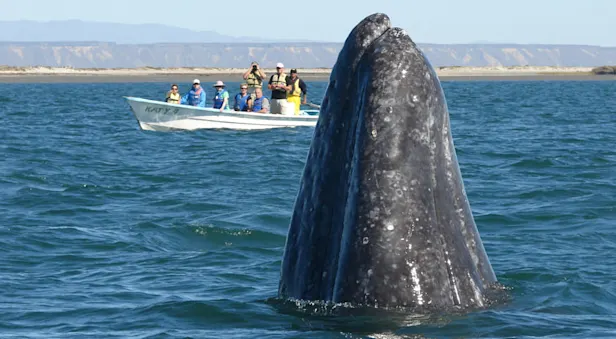
Know Before You Go
American Oystercatcher Facts | Baja Wildlife Guide
Oystercatcher is the common name for any of about 10 species of shorebirds that are distinguished chiefly by their long, vertically flattened bill, legs of moderate length and feet with short, thick toes. The common American oystercatcher is found along both the Atlantic and Pacific coasts. The bird is 19 inches in length and has yellow eyes, an orange orbital ring, a long, bright red/orange bill and pink legs. Its head and breast are black, and it has a white belly and a dark gray back and wings. It feeds on shore mollusks, crustaceans and marine worms.
Oystercatchers in Baja construct their shallow, shell-lined nests on the grounds of pebbly, sandy beaches or the edges of salt marshes. Pairs usually nest in the same area year after year. The typical clutch consists of between two and four eggs, which are speckled with brown.
The oystercatcher feeds primarily on coastal beaches and mudflats, using its long bill to forage for shellfish and marine invertebrates in muddy, shallow water. They prey upon bivalves such as clams, mussels and oysters, in addition to crabs, starfish, sea urchin, marine worms, limpets and jellyfish. Header Credit: Brad Josephs































